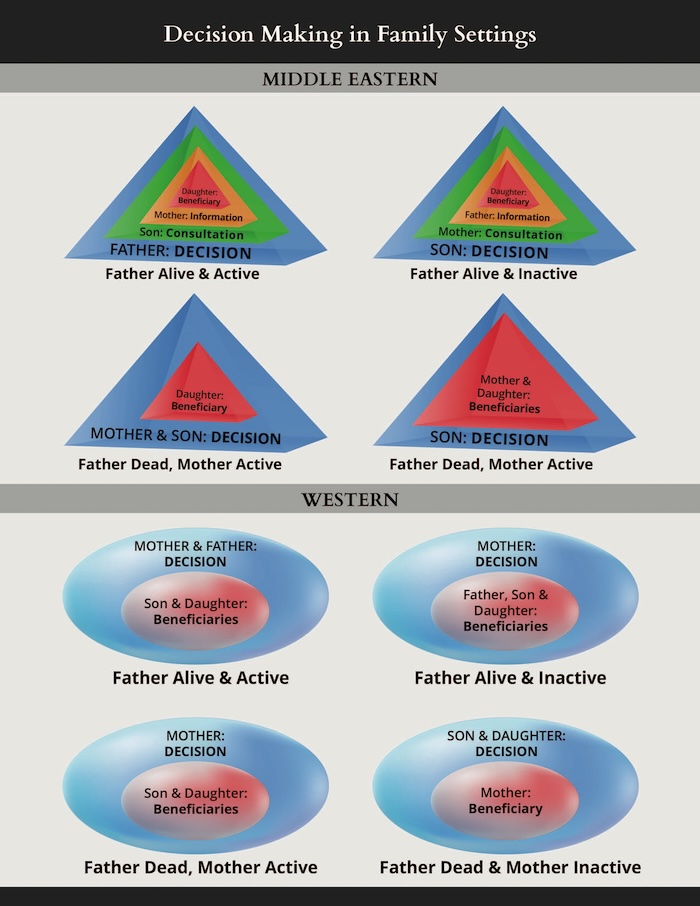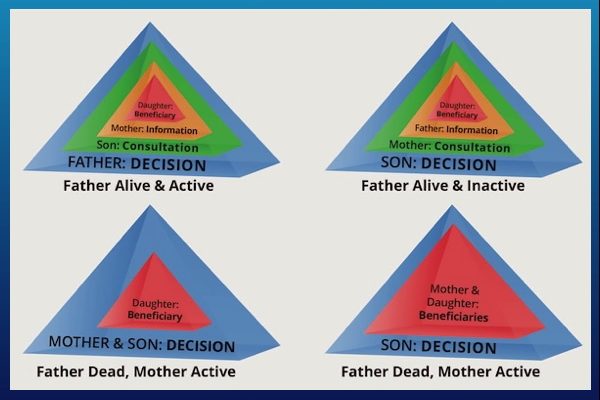The concept of a “pyramid of power” in Iranian families is a fundamental element that shapes both cultural expectations and legal interpretations in matters related to California family law disputes. This hierarchical structure is deeply rooted in both traditional values and legal principles, influencing everything from decision-making authority and property rights to the resolution of disputes within the family. Understanding this pyramid of power is essential for anyone dealing with legal matters in Iran, particularly those involving family dynamics, inheritance, and the administration of estates.
Full article PDF
Pyramid of Power: Legal and Cultural Implications in Iranian Family
This article provides an expanded analysis of the pyramid of power, its legal implications, and how it influences family law in Iran and its litigation in the U.S. courts. It is based mainly on the writer’s professional experience as a Farsi speaking Iranian-born and raised and an attorney and expert witness in numerous U.S. trials involving ownership and division of assets in Iranian families.
Yet, this view is not without controversy 1 It is criticized that the framework presented here as amplifying “stereotypical tropes” and ignoring the lived diversity of Iranian women’s experiences, both in Iran and the diaspora. Rather than dismissing this critique, the writer acknowledges it as an essential part of the dialogue.
This article was published first on October 7, 2024 in the Los Angeles Daily Journal. In reaction Panteha Abdollahi, Esq., an Iranian-American attorney issued a public letter urging its retraction. Citing the achievements of Iranian women across multiple professions—from Nobel laureates to law firm partners—Ms. Abdollahi asserted that Iranian society is not monolithic and that, in many cases, women are at the forefront of leadership and social change, not confined to subordinate domestic roles. She urged recognition of alternative family models that invert or even reject the patriarchal pyramid altogether.
While traditional hierarchies remain influential in many Iranian families—particularly in contexts of marriage, inheritance, and dispute resolution—it is equally true that Iranian society is evolving. The co-existence of patriarchal norms and emerging egalitarian structures is itself a feature of the contemporary Iranian experience. This article, therefore, offers a culturally specific lens rooted in familial tradition while welcoming and incorporating contrasting perspectives that challenge or revise those traditions.

